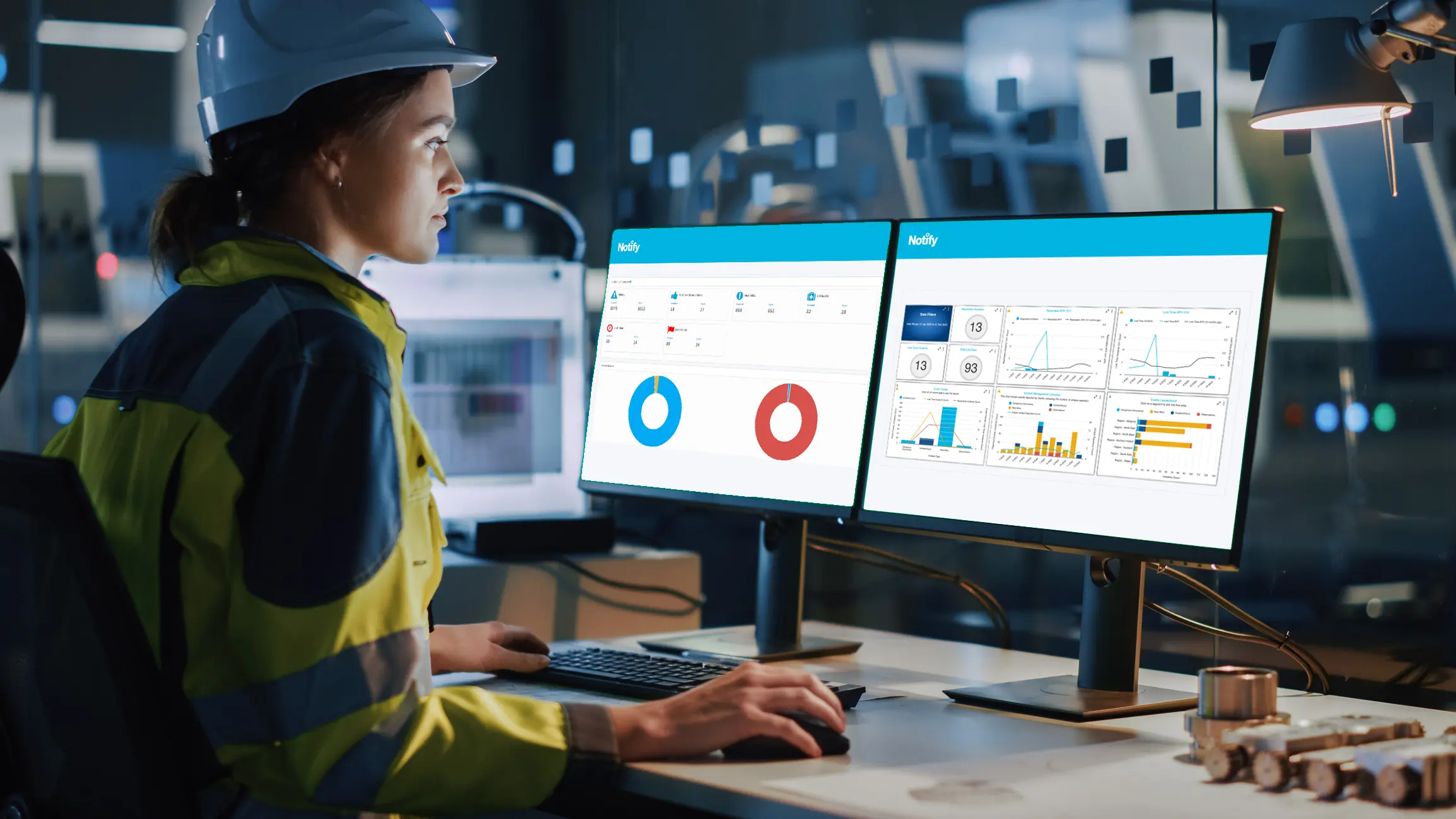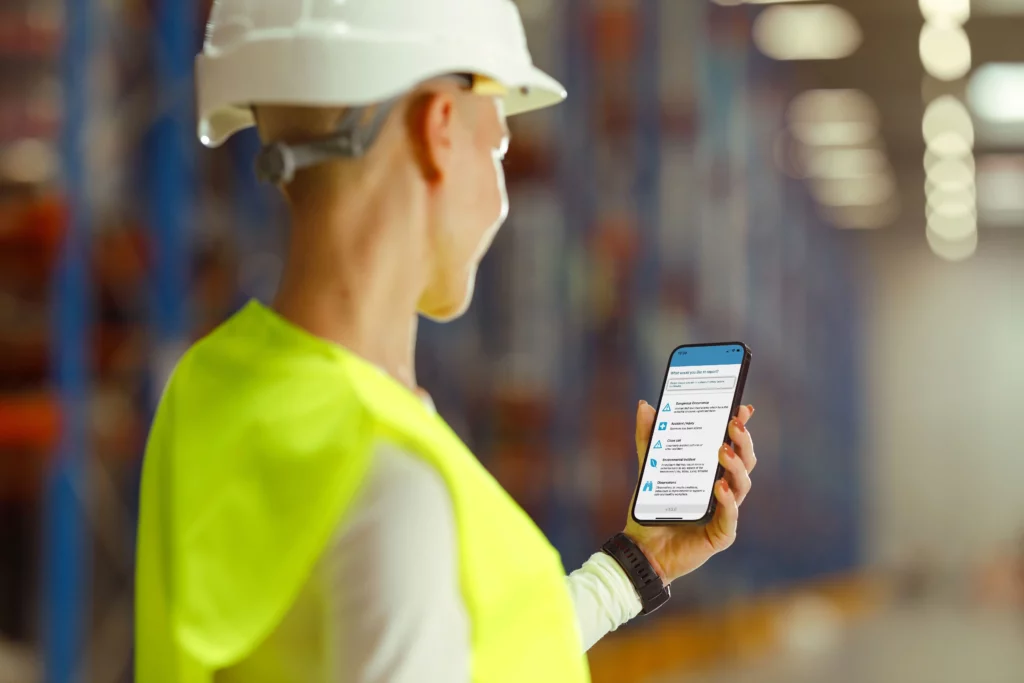Historically, spreadsheets have been our fail safe, our familiar Microsoft tool for recording and tracking information. But what if there was an easier way? A more efficient way? A way to easily capture, visualise, report and action health and safety information?
In an era of digital transformation, traditional methods that were once the backbone of safety management, are now becoming relics of the past. This shift is not just a matter of convenience but a fundamental need to help safety leaders enhance performance, improve efficiency and demonstrate compliance – including a more effective way to retain safety documents for any future requirement, such as a defence to civil or criminal litigation.
In this article we share 8 reasons why transitioning to health and safety software isn’t just an upgrade, it’s a game changer when it comes to proactively reducing risk and supporting regulatory compliance.
- Eradicate Human Error
Manual data entry is notoriously prone to errors. Imagine a scenario where an audit manager incorrectly enters inspection data, overlooking a critical fault in machinery. This mistake could compromise the safety of your workforce and lead to significant financial and reputational damage, should something go wrong. Health and safety software enables you to capture and record consistent and accurate data, on the go, in real-time, significantly reducing the risk of such errors. Whether it’s standardising the way you report safety events or collating consistent audit information, health and safety software will ensure you get accurate and reliable information, when you need it.
- Access Real-Time Data and Incident Information
A delay in accessing safety data is like trying to navigate through fog—slow and risky. Imagine that one of your employees spots a hazard or a near-miss on site but doesn’t have a way of recording it, other than via pen and paper. As a health and safety professional, you would have to wait until that person returns from site and hands you the near miss slip or manually types it into a programme such as Excel. This could be hours, days or weeks depending on the location and nature of work, meaning that potential to cause harm still exists for other employees.
Also consider an accident occurring on site. Who is alerted? How are they alerted? How long does that take? Could that time delay increase the severity of the accident? Could it lead to another accident?
In emergency situations, the ability to respond quickly and effectively can save lives. Traditional methods are slow and cumbersome and can lead to delays that exacerbate the situation. Health and safety software speeds up your incident response time with features like automated notifications for high priority incidents, ensuring that when an emergency occurs, the response is swift, coordinated, and effective. It transforms the fog into a clear day, where every incident detail is visible and actionable, from one central location.
- Remove Data Silos
Having data in multiple spreadsheets within your organisation can impede the flow of critical safety information. For instance, if the manufacturing department identifies a recurring safety issue but that doesn’t reach the maintenance team promptly because it’s stored in a localised Excel file, the opportunity to prevent a potential incident is lost. Likewise, if you have paper based near miss reports or audits coming in from different departments, it will be extremely difficult to analyse your data and identify trends and hot spots for improvement initiatives.
Health and safety software acts as a central repository for all safety-related data, ensuring that valuable insights are easily visible and shared across departments, fostering a culture of transparency and proactive risk management. Health and safety data from such systems can also be integrated into your other business platforms, giving you a unified view of operational performance.
- Unlock Safety Intelligence
We all know that Excel can create bar charts, pie charts and combination charts that give us some basic data analytics. However, this heavily relies on manual data entry and potentially, pulling in data from multiple spreadsheets, making it difficult to drill down for further insight.
Without the ability to effectively analyse safety data, you, your teams and your board will miss out on critical leading indicators that could prevent accidents and injuries occurring in the future. For example, a trend analysis might reveal that most accidents occur on the late Friday shift, suggesting fatigue as a factor. Health and safety software provides the dashboards you need to uncover such trends, allowing you to prioritise and implement targeted improvement initiatives like shift adjustments or additional breaks, to mitigate risks before they escalate.
Charts and graphs are also updated in real-time and without manual intervention, saving you time and providing you with readily up to date information for more informed decision making.

- Save Time and Improve Efficiency
The paper-based audit that is being used for your daily site inspection only works until there’s an update. How much time do you have to spend rewriting the audit after process, people or equipment changes? Who then needs to review it and sign it off? Is there a digital audit trail and visible version control that you can easily show to the HSE?
The same goes for spreadsheets. They can be great for planning and tracking data, but they don’t update automatically. They rely on manual data entry meaning you don’t have a real-time view of what’s really going on.
As a health and safety professional, the last thing you need is to be bogged down by paperwork and manually maintaining records to comply with legislation. It detracts from your ability to engage in meaningful safety initiatives that will help to protect your employees.
By automating routine tasks, health and safety software frees up your time to focus on strategic safety improvements. You can create items such as audit templates that you can then schedule for completion when needed. Safety intelligence dashboards that are automatically populated with safety data will also ensure you have a real-time view of safety performance across your sites. See how a centralised digital H&S system helped Zen Internet make huge time savings.
- Support and Accelerate Compliance
Is the thought of a looming audit playing on your mind? Or are you anxious about what the HSE might find, or not find, if information isn’t readily available?
When it comes to demonstrating compliance, manually searching through filing cabinets and paper-based files to locate incident investigation reports, risk assessments or audits, is a time-consuming task that invites unwanted pressure. You want to be confident that you put the correct safety measures in place, that you have evidence that any incident investigations were carried out thoroughly, that audits were carried out on time, that the latest safe system of work was being utilised.
Health and safety software removes this burden by providing an easily accessible, digital audit trail for all health and safety activities. Not only that, it will help to support compliance with standards such as ISO45001 and ISO9001, by providing a centralised repository of all safety documentation, where the latest versions are accessible to all relevant employees.
With safety intelligence dashboards, you can also be proactive by showing regulators how your improvement initiatives are positively impacting your organisations safety performance. This could be reporting on data that shows a reduction in lost time incidents, a lower accident frequency rate, or an increase in the number of audits and inspections being carried out before activities are taking place.
Health and safety software doesn’t just support compliance, it’s an enabler that allows you to demonstrate, accelerate and exceed compliance requirements.
- Enhance Engagement, Collaboration and Communication
Transitioning away from paper-based processes to digital solutions, especially to health and safety software that has mobile app capabilities, significantly enhances employee engagement and collaboration in workplace safety efforts. This digital shift is pivotal for fostering a culture where safety is everyone’s responsibility, and where every employee can actively participate in maintaining and improving the workplace’s safety standards.
Safety mobile apps, such as Notify’s Incident Management app, make it easy for employees to report observations, hazards, near misses or incidents, in real-time, from any location. By making it quick and easy and by removing the burden of manual, paper-based processes, your employees will be more likely to report safety events, giving you more learning to proactively reduce risk. Not only that, health and safety software also allows you to give timely feedback to those reporting via the app, so they can stay up to date with any incident investigations or corrective actions. By closing the feedback loop, your employees will feel like they are being listened to, which in turn will motivate them further to actively participate in proactive safety reporting.
Safety mobile apps, such as Notify’s Audits and Inspections app, enable you and other employees to conduct audits and inspections on the go, with the ability to access standardised checklists and documentation online or offline. This flexibility is crucial for sites with limited internet connectivity or for employees that work remotely.
As for your board, spreadsheets make it difficult for them to visualise your organisations safety performance over time. They also hinder their ability to interrogate the data, making it difficult for them to engage and see where potential improvements can be made. With health and safety software, your board can have unlimited access to safety intelligence dashboards. By making it easy for them to visualise the analytics, they are more likely to engage and understand your organisations safety performance. This can have huge benefits such as proactive support for improvement initiatives or risk mitigation.
- Support Environmental Sustainability
Transitioning from Excel and paper-based processes to health and safety software not only streamlines operations, supports compliance and cements a positive safety culture but also offers significant environmental benefits.
The most direct environmental benefit of moving to health and safety software is the substantial reduction in paper use. As we have discussed throughout this article, traditional safety management processes often rely heavily on paper for reports, audits, incident forms, and compliance documentation, consuming significant resources. By digitising these processes, your organisation can dramatically decrease its paper consumption and reduce its environmental footprint.
Beyond operational efficiencies and the direct environmental benefits, health and safety software can also support better environmental compliance. By enabling more effective tracking of environmental data and facilitating the collection and analysis of environmental incidents, your organisation can improve its environmental performance. This might include managing waste more effectively, reducing spill incidents, or ensuring more efficient use of resources, all of which contribute to a lower environmental footprint.
Conclusion
The transition from spreadsheets and paper to health and safety software is not just an upgrade; it’s a transformation that touches every aspect of safety management. By embracing this change, your organisation can enhance it’s safety culture, improve compliance, and ultimately protect its most valuable asset—its people. In the digital age, health and safety software is not just a tool; it’s a strategic ally in the quest for a safer, more efficient workplace.
Are you ready to make the transition? Book a demo or get started for free today.



